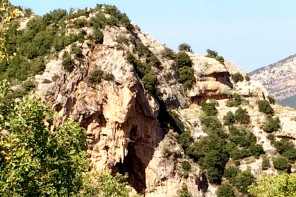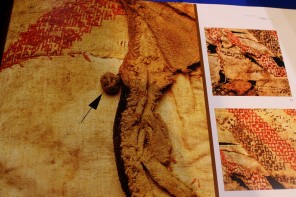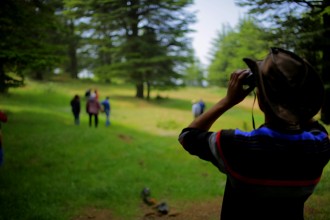It is certain that the people of Hadath survived the 7 years siege due to continuous food and water supply, and when the Mamluks cut the water supply, Assi el Haddath fell.
But how this grotto-fortress thought to provide a water supply? Three hypotheses might be proposed:
First hypothesis:
the water of the basin inside the grotto was provided by the infiltration of rainwater. We visited the cave many times in the winter without noticing any seepage of water or any channel that could divert rainwater to the basin.
Either the rain water never fed this reservoir or the infiltration coming from the top of the cliff entered the cave through a set of cracks (natural or artificial) that we have not yet discovered or which are now sealed.
Second hypothesis:
The possible presence of a water source inside the grotto. This possible source was probably not permanent or had a very low flow in the summer, hence the need to build a reservoir. The fact that the seeping water no longer exists today is not surprising, since the small surface sources disappeared with time or changed their course due to human development or land shifts. But if there was aspring inside, the grotto would have been humid, which is not the case; on the contrary, the inside of the grotto is dry and this dryness was one of the main factors that helped preserve the human remains and other material;
“Several(conservation) factors appear to have contributed to this:the grotto is now dry, and there is no evidence to supportrunoff traces, especially the location of the deposit
(de-posit = soil of the grotto)
; furthermore, there is the pres-ence of a water reservoir in the grotto that the people filled for their personal use, thereby suggesting that the water source was not very close or at least not inside the cave”
Third hypothesis:
the abstraction of water from one or more neighboring sources and draining it to the grotto. This hypothesis is plausible since the three sources, Ayn al Hab-chieh, Ayn Koussa and Ayn al Jorn, are all located less than 800 meters from the grotto and at a level higher than its ceiling. Moreover, the existence of a permanent water sup-ply reinforces the idea that the grotto was constantly inhab-ited and ready to serve as a refuge at all times.The third hypothesis coincides with a local tradition whichclaims that there was a secretly buried canal that fed theunderground grotto of Asi-l-Hadath with water from Aynal Habchieh (pl.2)
To overcome the besieged, the Mamluk soldiers made their horses thirsty to incite them to discover the canal. The water cut was the prelude to the fall of the grotto-fortress



